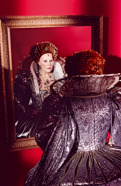Sondra Radvanovsky, Queen of the Met, on Why Opera Is for Broadway Lovers & Royal Watchers
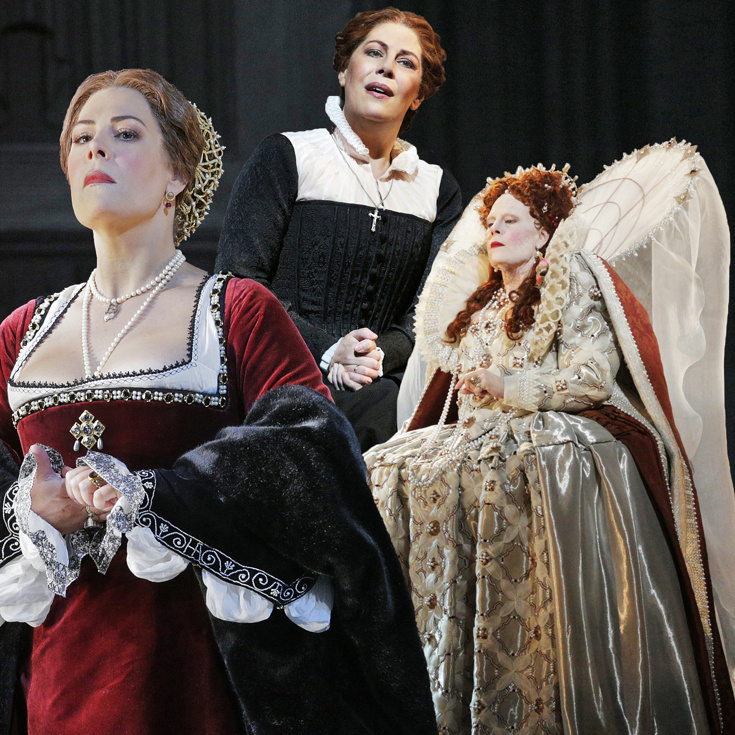
(Photos: Ken Howard/Metropolitan Opera)
The radiant Sondra Radvanovsky enters her dressing room at the Metropolitan Opera. Some two hours later, and with the help of a 35-pound gown, liquid latex and—who’d have thought—tissue paper, the soprano, barely recognizable, emerges as Elizabeth I in her final days.
The metamorphosis, for the Met’s new production of Donizetti’s Roberto Devereux, marks the third and final queen Radvanovsky has taken on this season. She previously portrayed Anne Boleyn and Mary Stuart in director David McVicar’s stagings of Anna Bolena and Maria Stuarda, respectively. She’s the second singer to perform all three in one season and the first to do so at the Met.
Before Roberto Devereux opens on March 24, Broadway.com visited Radvanovsky’s dressing room to witness the transformation and discuss the operatic feat.
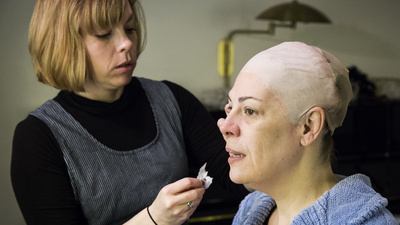
Marathon Training
“It’s like her coat of armor," Radvanovsky says, describing Elizabeth's ("Elisabetta" in Donizetti's world) ornate appearance. "She puts it on, and it’s her queen persona.” The role presents a tremendous physical challenge, as the crippling effects of age and resentment threaten her regality.
“Temperament and tightness often go together,” Radvanovsky explains. “But if you’re tight, you can’t sing. So I have to have that tension in my body, but not in my voice.” The singer, who’s over two decades younger than Elizabeth at the time of her death, observed her elders’ movement on the street and on film to find that balance. “I have to be aware of how my body works and how Elizabeth’s body worked at that time, and integrate the two.”
From the sound of her exercise regime, you’d expect her to be an Olympian, not an opera singer. But they’re not that unlike: “You go to the gym to make sure you have the stamina to breathe in the corsets.” Radvanovsky often memorizes music while on a machine.
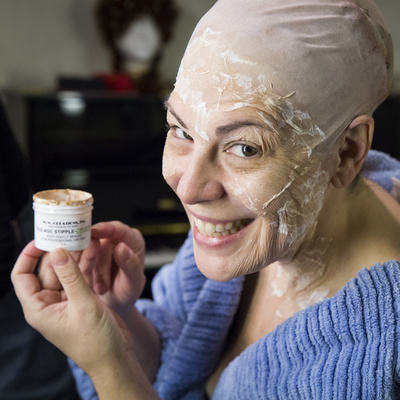
Three-for-One
Though the three operas make up what is now frequently referred to as Donizetti’s “Tudor Trilogy,” the composer did not intend for them to be performed as a collective unit. This is in large part due to the range of vocal technique required; Radvanovsky juggles both a lilting lyric soprano and fiery dramatic coloratura throughout the pieces.
While Radvanovsky winkingly doesn’t recommend anyone perform all three concurrently, she observes a connective thread throughout that informs her perspective on the operas as a series: Elizabeth.
A child actress plays a young Elizabeth in Anna Bolena, and in Maria Stuarda, she’s Mary Stuart’s fierce rival. “Now I understand why she was such a militant, strong lady—because of all the adversity she went through. I got to see that from the outside, and now, finally playing Elizabeth, I have that vocabulary.”
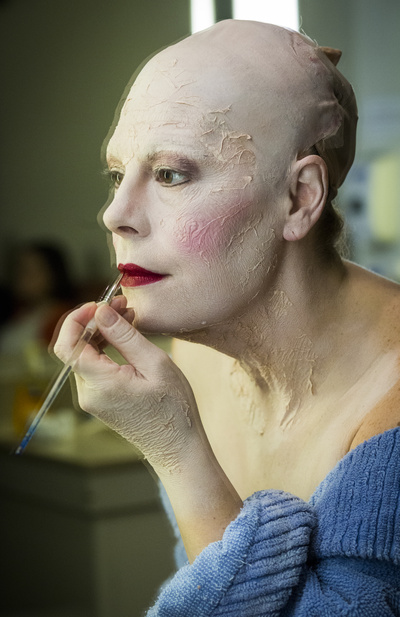
Ugly Is Beautiful
Radvanovsky brings a distinct theatricality that may raise the eyebrows of opera’s more devoted patrons. The most jarring examples are her visceral—at times guttural—outbursts of emotion that punch through Donizetti’s bel canto score. Bel canto means “beautiful singing,” but the soprano constantly toys with the balance between beautiful and frightful.
“It can be shocking when people hear it,” Radvanovsky says, “but that’s supposed to be the point. There are moments where ugly singing and screaming are required." With a smirk, she adds, "Not everyone will love it. It’ll be criticized, I’m sure.”
Radvanovsky, who studied acting as well as singing, stresses that it’s not entirely about the vocals. “Look past [the singing] and see that these were human beings at the heart,” she advises. “Remember that Elizabeth lived; she breathed. We know a lot about her.”
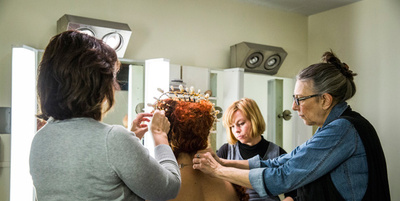
Broadway at the Met
The leap from the Great White Way to the Met is closer than ever as theater directors—including Tony winners Susan Stroman, Bartlett Sher and Michael Mayer—offer a contemporary Broadway sensibility to opera. While these stagings often polarize traditionalists and newer audiences, Radvanovsky encourages the interplay between the two.
“[Opera] is a lot like Broadway,” she says, before confessing to previously turning down a Main Stem offer and wanting to try her hand at The King and I or Carousel. “The plot is there, and it’s enthralling. I know I’m an opera singer, but we’re actors, too.”
Radvanovsky says there is a stigma surrounding opera, citing the “fat soprano” and “park and bark” tropes. But while those stereotypes fade with new and inventive stagings, opera has to evolve to survive. The first step is exposure: “Getting people to come for the first time is difficult,” she says, “but if people give it one try, they’re really drawn into it.”
And for those who are still skeptical? “You went to your first Broadway play or musical at some point, right? Come to opera.”

Roberto Devereux begins performances at the Metropolitan Opera on March 24. Performances will run through April 19.
(Dressing room photos: Caitlin McNaney)
Related Shows
Articles Trending Now
- Curtain Up on George Clooney in Good Night, and Good Luck on Broadway
- Odds & Ends: Dorian Gray Star Sarah Snook and Glengarry's Kieran Culkin Have a Succession Reunion on Broadway and More
- Molly Osborne Is Making Her Broadway Debut as the Desdemona to Denzel Washington's Othello—Maybe Someday She'll Believe It
